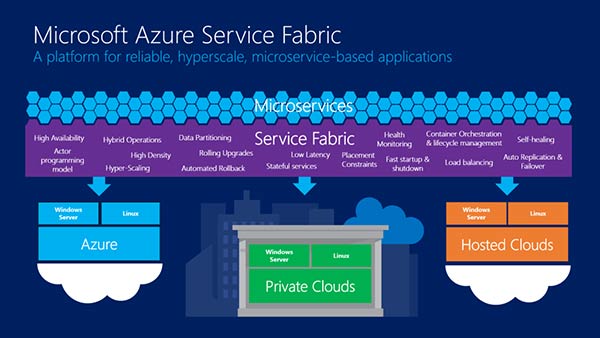Microsoft has announced a new cloud offering called Microsoft Azure Service Fabric which is essentially a platform that enables developers and ISVs to create cloud services with a high degree of scalability and customization. Service Fabric is in production internally for more than five years and it has pioneered in delivering mission-critical cloud services.
 .
.
Azure Service Fabric
Azure Service Fabric is a foundational technology upon which the entire Azure core infrastructure is based. Service Fabric also powers services like Skype for Business, InTune, Event Hubs, DocumentDB, Azure SQL Database (over 1.4 million customer databases) and Bing Cortana – which can scale to process over 500 million evaluations in a second.
Azure Fabric adds following benefits to the developers:
- Azure Fabric supports creating both stateless and stateful microservices – an architectural approach where complex applications are made of small, independently versioned services – in order to power the most complex, low-latency, data-intensive scenarios and scale them into the cloud.
- Fabric adds benefits like orchestration and automation for microservices with advanced levels of application awareness and insight.
- Developers need not invest their time on re-architecturing their apps during the usage growth phase – several hard distributed systems problems like state management and lifecycle management capabilities are added by default.
- Developers can easily build, test and debug their Service Fabric applications on one single-box deployments, test deployments as well as production deployments, making the effective use of Visual Studio tooling along with the command line support.
Initially, Microsoft is going to release a developer preview of Service Fabric which is going to be released at BUILD event to listen to the customer feedback. Microsoft aims to to deliver a consistent cloud across public, hosted and private clouds. The next version of Windows Server is going to offer on-premises solution as well. Microsoft also provides migration guidance to its customers using Azure Cloud Services who want the benefits of Azure Service Fabric.
For more details on Azure Service Fabric read this Azure Blog.
Leave a Reply